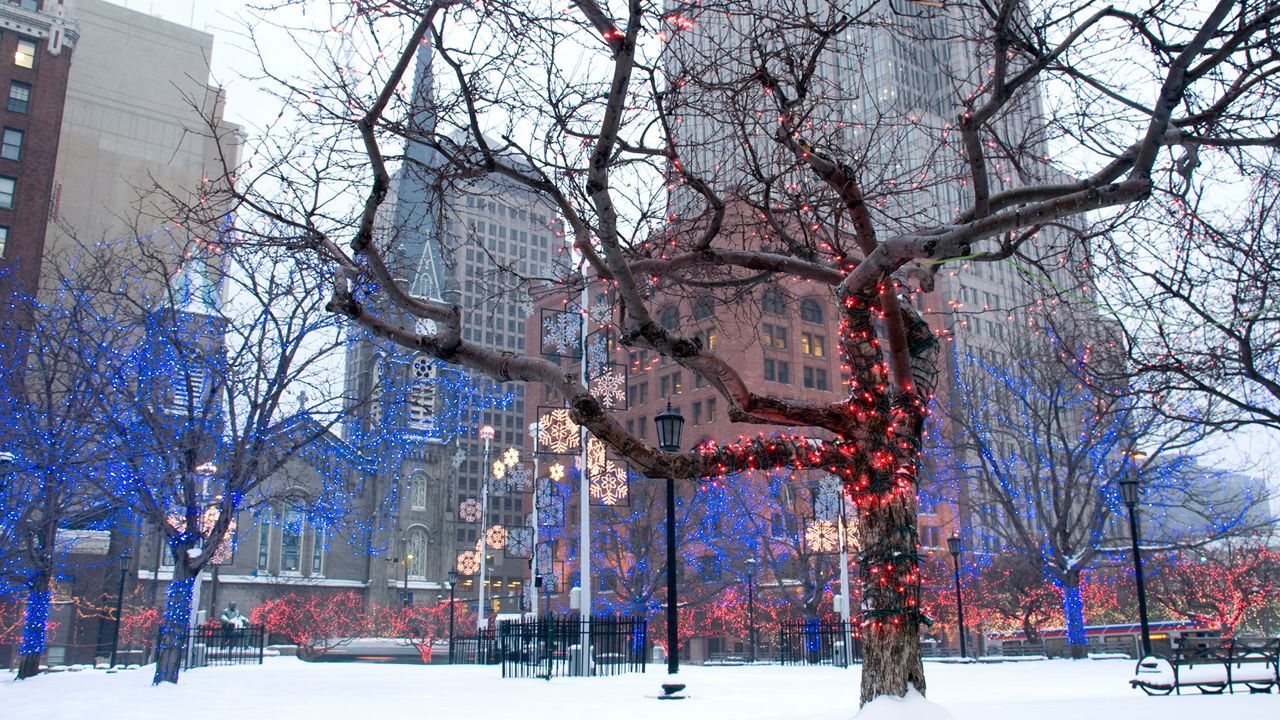Christmas is just around the corner, which brings up the inevitable meteorological question: What are your chances of waking up to a blanket of snow on Christmas morning?
Dating back to Bing Crosby's 1942 rendition of Irving Berlin's hit song (and Sinatra's re-make a few years later), the concept of a white Christmas remains an idyllic one to this day.
Of course, this version of an idyllic Christmas requires some cooperation from Mother Nature.
Before we start digging into the climatology and what your white Christmas chances might be, you should probably know what exactly a white Christmas is, because there is an actual definition behind it all.
For a white Christmas to officially take place, you need an inch or more of snowfall on Christmas, according to the National Weather Service (NWS).
If you look closely at preliminary monthly climate data from the NWS, you can see the daily log of snow that's officially on the ground for your location. If the highlighted number is one or above on December 25th, you've got enough snow for an official white Christmas.
In the example below, you can see that seven inches of snow were on the ground in Buffalo, New York on December 25, 2017.

Well, if you're looking to make sure that you get a white Christmas, we've got a few places in mind for you.
Here are a small handful of locations that, based on official National Weather Service data archives, are just about guaranteed to enjoy a white Christmas:
-Alta, Utah (lowest Christmas Day snow depth on record: Eight inches)
-Jay Peak, Vermont: (lowest Christmas Day snow depth on record: One inch)
-Kotzebue, Alaska: (lowest Christmas Day snow depth on record: One inch)
-Stanley, Idaho: (lowest Christmas Day snow depth on record: Three inches)
-Winter Park, Colorado (lowest Christmas Day snow depth on record: Seven inches)
-Yellowstone National Park (Bechler River), Wyoming: (lowest Christmas Day snow depth on record: 14 inches)
Of course, there are plenty of other areas you're just about guaranteed to have a white Christmas, but they might not have an official observation site.
Closer to more populated areas (and reality) for the rest of us who don't live in Alaska or on top of a mountain, there are plenty of places where you're a near-lock to have a white Christmas.
Take a look:
For starters, the inner-mountain west and the lake-effect snow belts of the Midwest and Northeast are your likeliest spots to get a white Christmas. Ski country is usually a safe spot for obvious reasons.
If you're looking for places where you're guaranteed to not have a white Christmas, well, you probably didn't us need to tell you that if you head to Florida or south Texas, you'll be staring at palm trees instead of a snow-covered lawn.
Spectrum News is home to award-winning local news from Massachusetts to California to Florida, with many places in between. We figured it might be fun to pin Spectrum's 21 cities up against one another to see who's got the best chance at a white Christmas (sorry in advance, Tampa).
The winner? Syracuse, New York, with perhaps a slightly surprisingly low 58% chance of a white Christmas, based on 30-year records.
From Wilmington, North Carolina's 1% to the Cuse's 58%, here's a look at how your city stacks up:
Sorry Bay News 9 readers in Tampa, My News 13 friends in Orlando, and Spectrum News 1 readers in southern California. You have a 0% chance of a white Christmas.
Don't let the weather dictate too much of your Christmas spirit, though. After all, legend has it that Irving Berlin wrote "White Christmas" in La Quinta, California - a warm-weather desert with a 0% chance of seeing a white Christmas this year.



